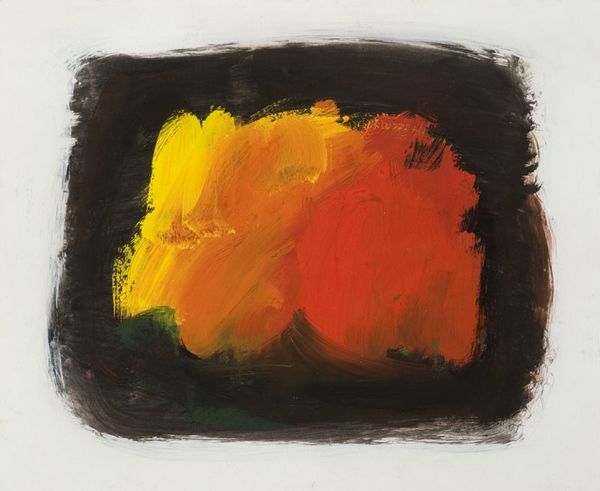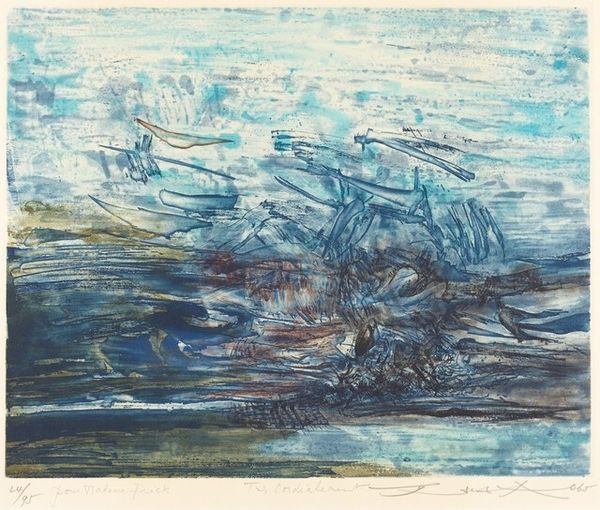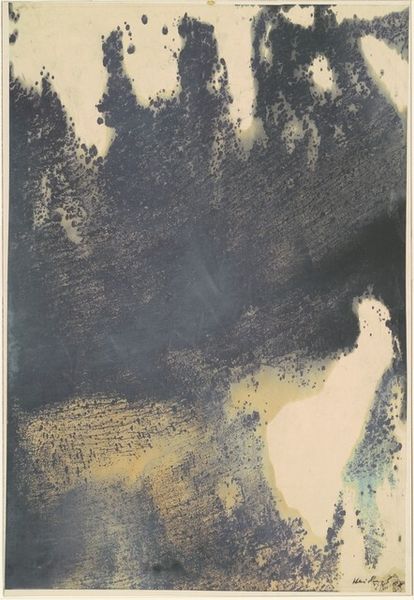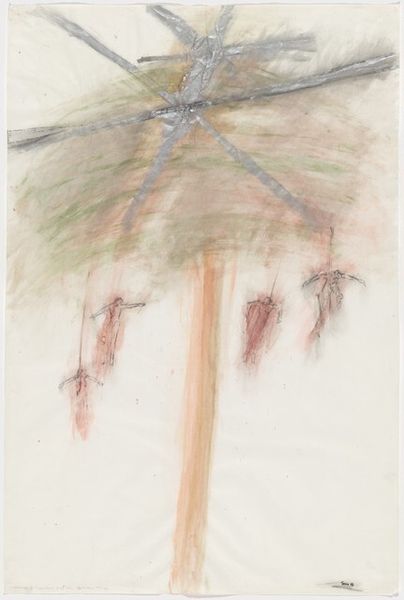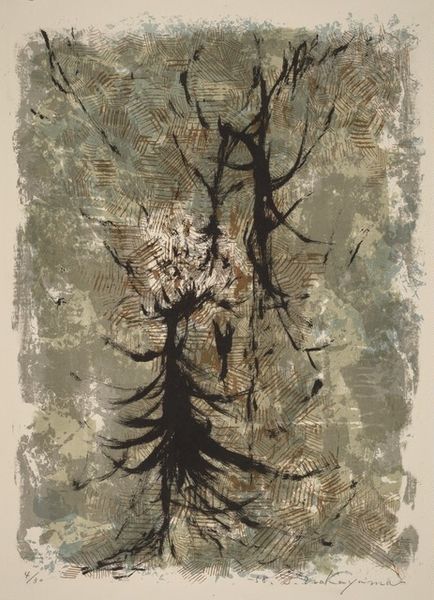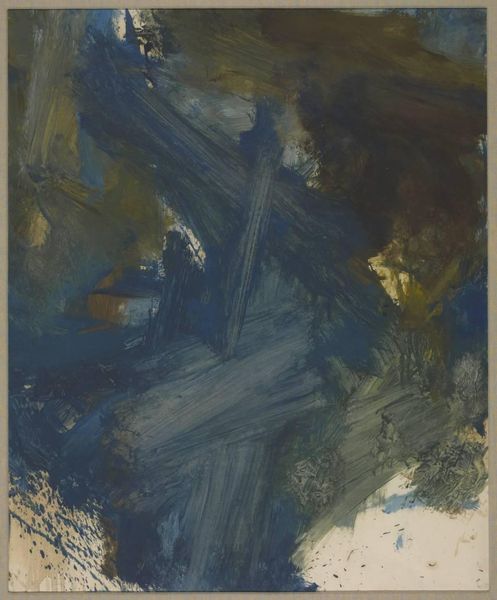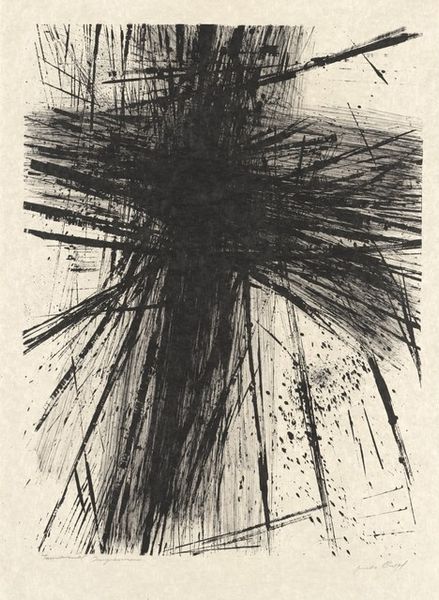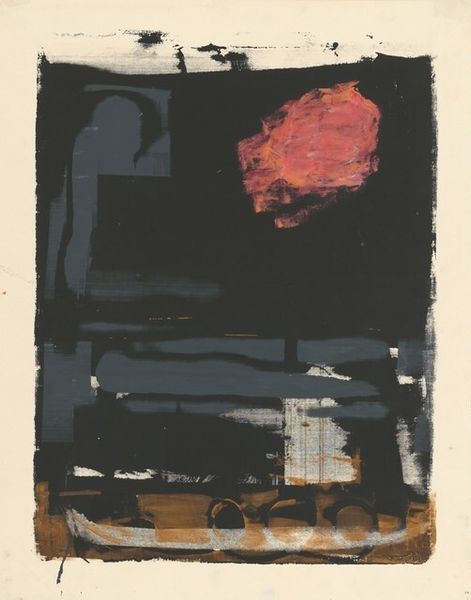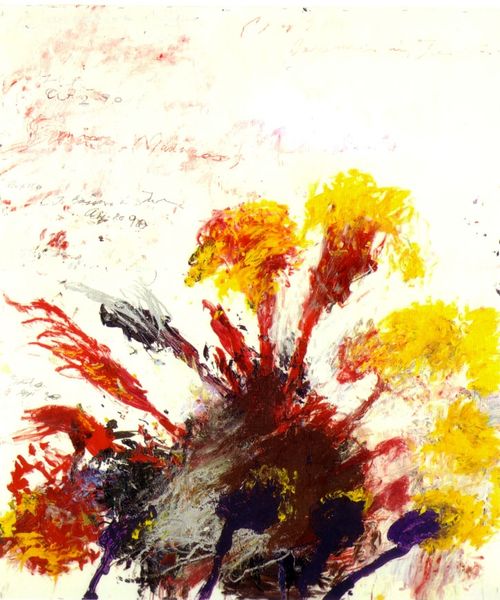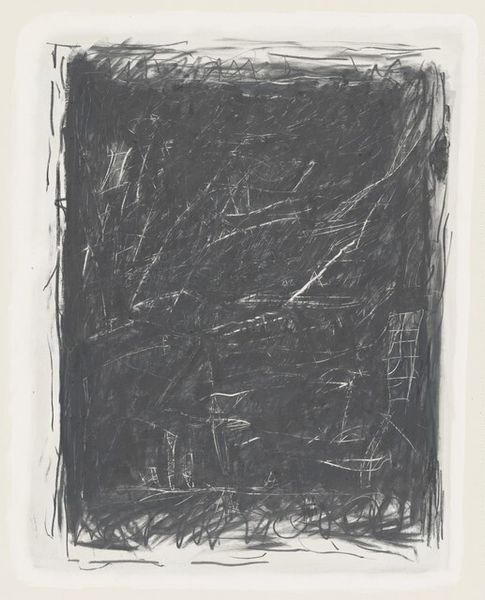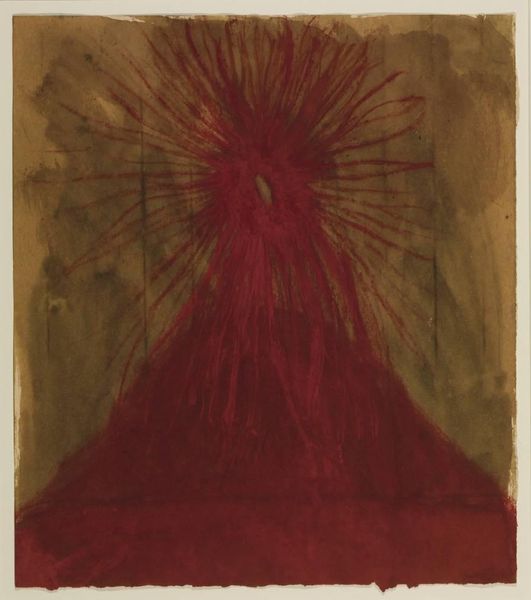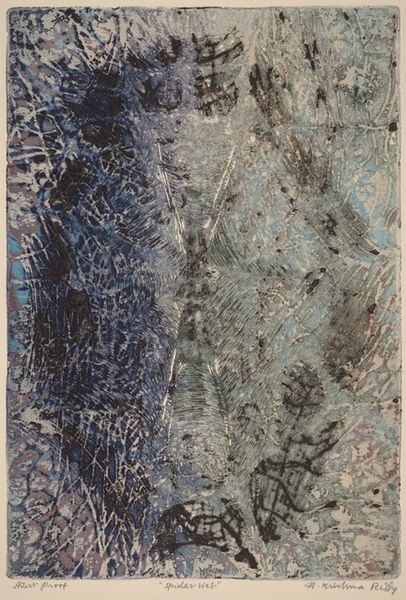
drawing, coloured-pencil, watercolor
#
abstract-expressionism
#
drawing
#
coloured-pencil
#
landscape
#
watercolor
#
coloured pencil
#
abstraction
Dimensions: image: 33.66 × 28.58 cm (13 1/4 × 11 1/4 in.) sheet: 43.18 × 35.56 cm (17 × 14 in.)
Copyright: National Gallery of Art: CC0 1.0
Curator: Jimmy Ernst's "Study for 'Icarus', No. 1," from 1964, is before us, rendered in watercolor and colored pencil. Editor: Well, my immediate reaction is that of an impending storm. The contrast between the agitated dark mass above and the relatively calm blue field below creates a palpable tension. Curator: Indeed, Ernst employs abstraction here to convey a sense of atmospheric unease, drawing the viewer in with expressive marks. His engagement with these mediums shows he knew the cost and scarcity, and worked on paper in advance of his later paintings. One has to assume he planned the labor appropriately. Editor: The way he layers the watercolor washes to build depth is masterful. Notice how the linear quality of the colored pencil creates movement, almost like a flock of birds taking flight... or perhaps a fall from great height? The contrast between the black harsh, feathered pencilstrokes against the softness of the blue could very well express Icarus’ final moments. Curator: The title is so interesting as the name of his work relates to ideas of hubris and the danger of unchecked ambition. Given its historical context of Cold War tensions and anxieties, how do you read into that with Jimmy Ernst's own background being someone whose family fled the Nazis? It reflects something about post-war labor that goes unseen, even though we all know of the Marshall plan... Editor: Perhaps. Although, on the other hand, there is an undeniable sense of vulnerability captured within his composition. The tension in the brushwork might also embody resilience or the persistent striving despite adversity. The composition might not just about the horror of falling but the ambition to rise and the cost that follows... Curator: Thank you. It's a perfect insight, that is something to be left lingering in our audience's ears. Editor: Glad to share this reflection; there is always an alternative angle from looking at art that changes in the course of its context.
Comments
No comments
Be the first to comment and join the conversation on the ultimate creative platform.

